Birmingham City FC leads the EFL League One with an imposing style of play under Chris Davies’ coaching.
The former Tottenham Hotspur, Leicester City & Celtic assistant manager is now a head coach for the first time with Birmingham.
His players and ideas are one step ahead of the rest in EFL League One in terms of quality and modernity.
After a disappointing relegation from the Championship, the Blues’ priority now is to build a solid playing model and grow as a team while winning.
At the time of writing, they have the highest possession percentage per match (68.4%) in the league and the highest number of passes per 90, too (554.44).
In this head coach analysis, which is a tactical analysis, we will provide an in-depth analysis of Chris Davies tactics and playing model at Birmingham.
Chris Davies’s Style Of Play
Chris Davies has players like Jay Stansfield and Ben Davies, who shine at this level.
Davies is building a solid and recognisable style of play to grow the team and achieve promotion to the Championship.
The most interesting detail about Birmingham City is that its match rhythm is insane compared to the other teams in the division.
They average more passes per possession (5.44) and allow fewer PPDA than anyone else in League One by some margin.
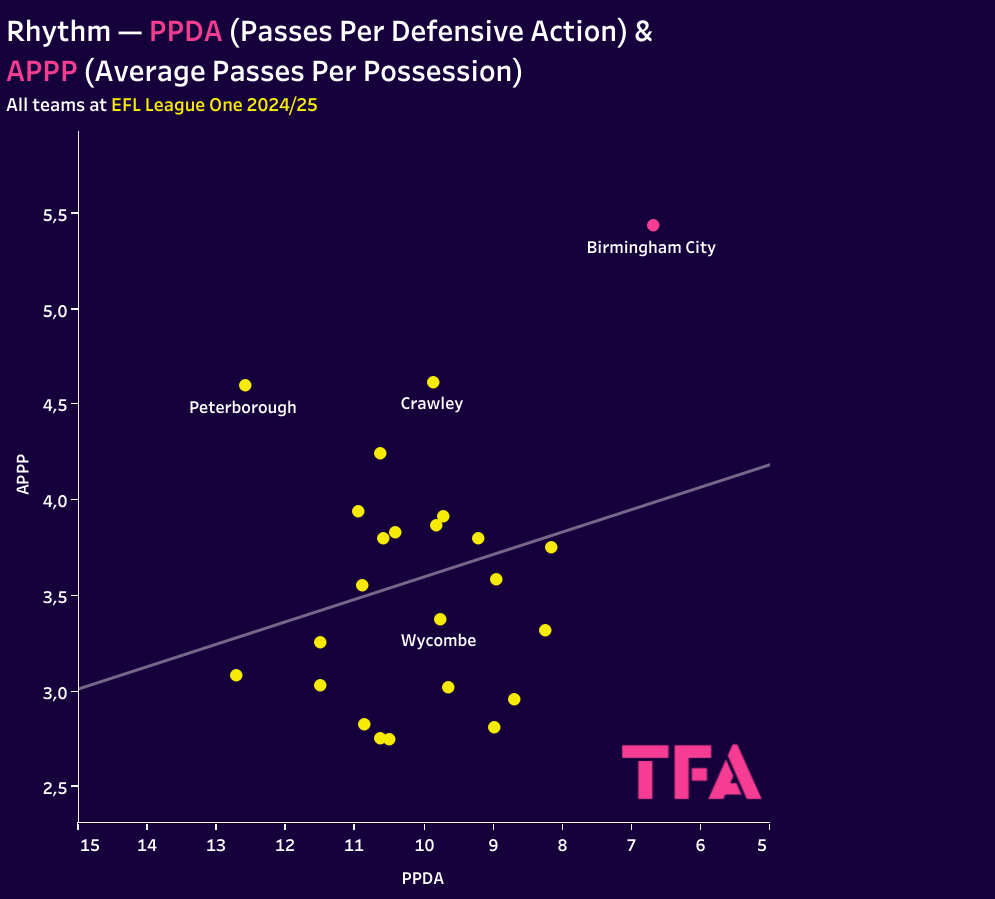
Figure 1 explains why and how Birmingham dominates possession: They have a high rhythm and intensity while pressing and a high tempo in possession.
The centre-backs are crucial to their structure.
Chris
Davies’ formation uses a 3+2 from the back in build-up, with the left winger—frequently Emil Hansson—and the right winger pinning width while the left wingeris part of the back three.
This is created from a base 4-2-3-1 shape.
In the final line, three players have freedom of movement between themselves, with Willum Þór Willumsson and Jay Stansfield as the quality stars.
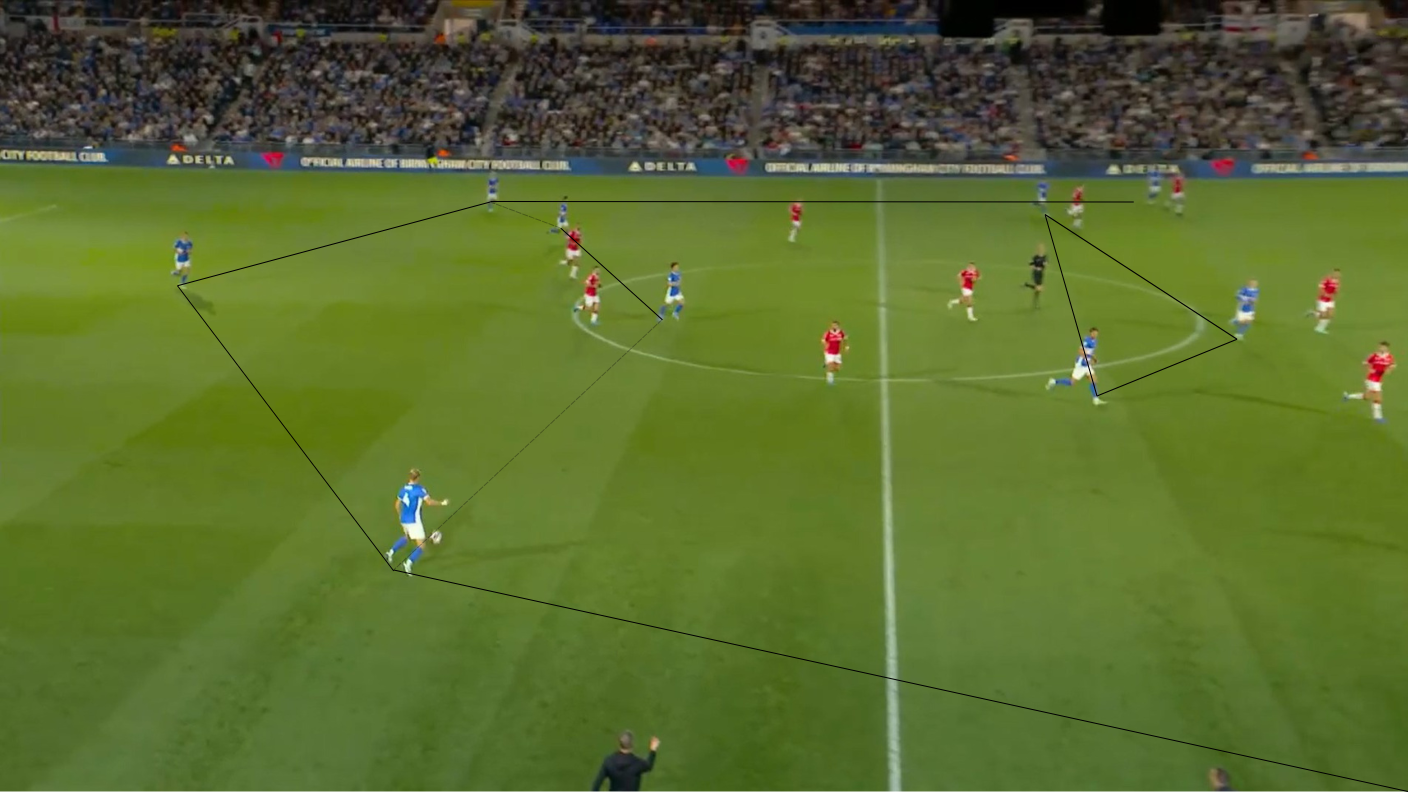
They tend to build using the best abilities of their centre-backs.
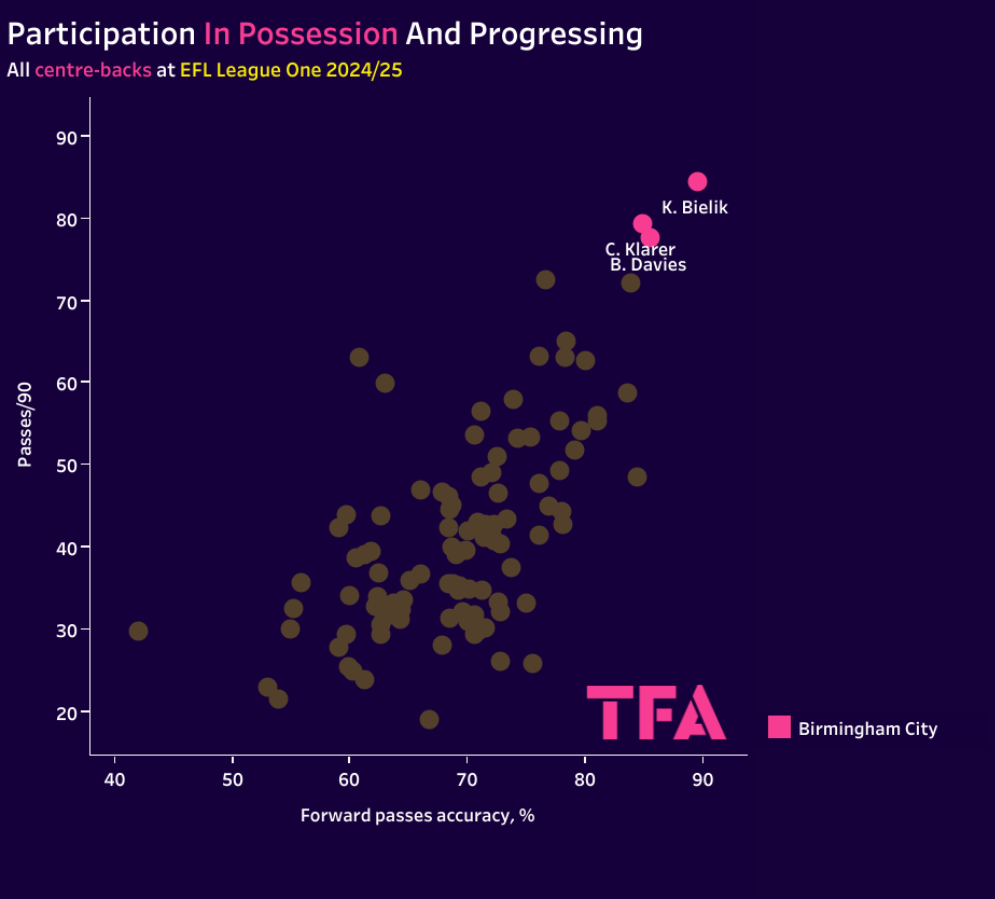
The centre-backs are the protagonists here, even more than other sides in the league.
They restart the play if the space to progress is not clear, always remaining patient in the initial phases of possession.
The double-pivot —usually Tomoki Iwata & Seung-ho Paik— is pinned inside, while the opposition block is dragged to be narrow.
Christoph Klarer is the right centre-back who tends to move into wide zones and drive forward with the ball if the rival is not marking him.
On the other hand, Ben Davies is frequently free as a type of ‘libero’ deeper, looking to launch long balls, targeting space in behind.
Christoph Klarer & Ben Davies Progressive Passes Map
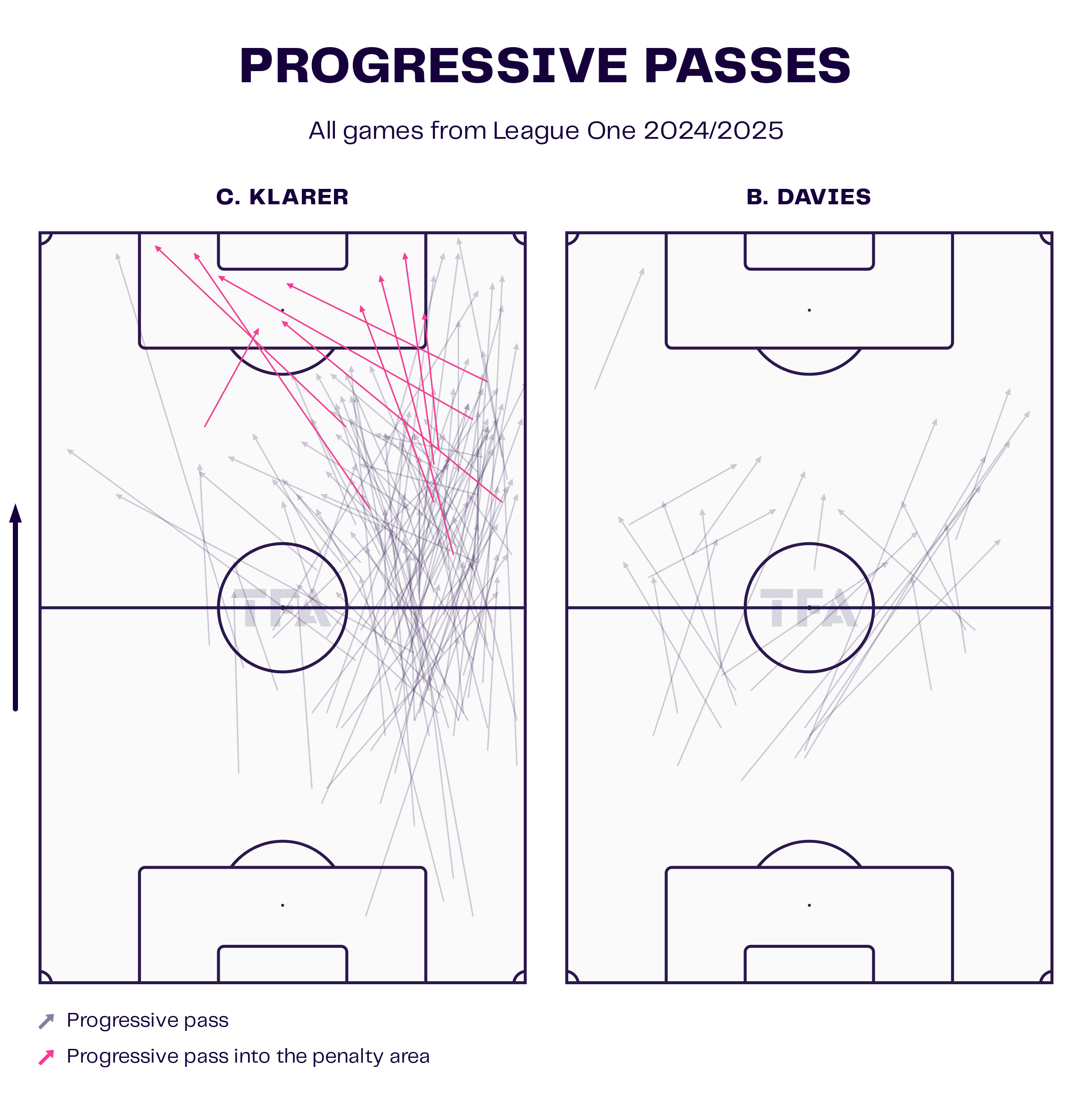
Davies takes the responsibility for sending balls over a longer range than his partner, Klarer.
Klarer’s role, meanwhile, is crucial to push and sink the rival.
If someone inside jumps for him, the ball can move to the central channels and progress numerically superiorly there.
If someone wide jumps for him, the ball can go to the maximum width.
In the centre, numerical superiority is not Birmingham’s only threat—its qualitative superiority in tight spaces is insane, thanks to players like Stansfield or Willumsson.
That’s why Klarer often takes space and time to think before moving forward and acting in the final third.
His striking technique is excellent, even for making half-space crosses with significant accuracy to finish or exploit second balls.

To complement, Ben Davies is the ideal teammate to send long balls in behind and switch the play.
Davies’s perfect style is a counter-pressing proposal with the opportunity to launch if the short passing routes are blocked.
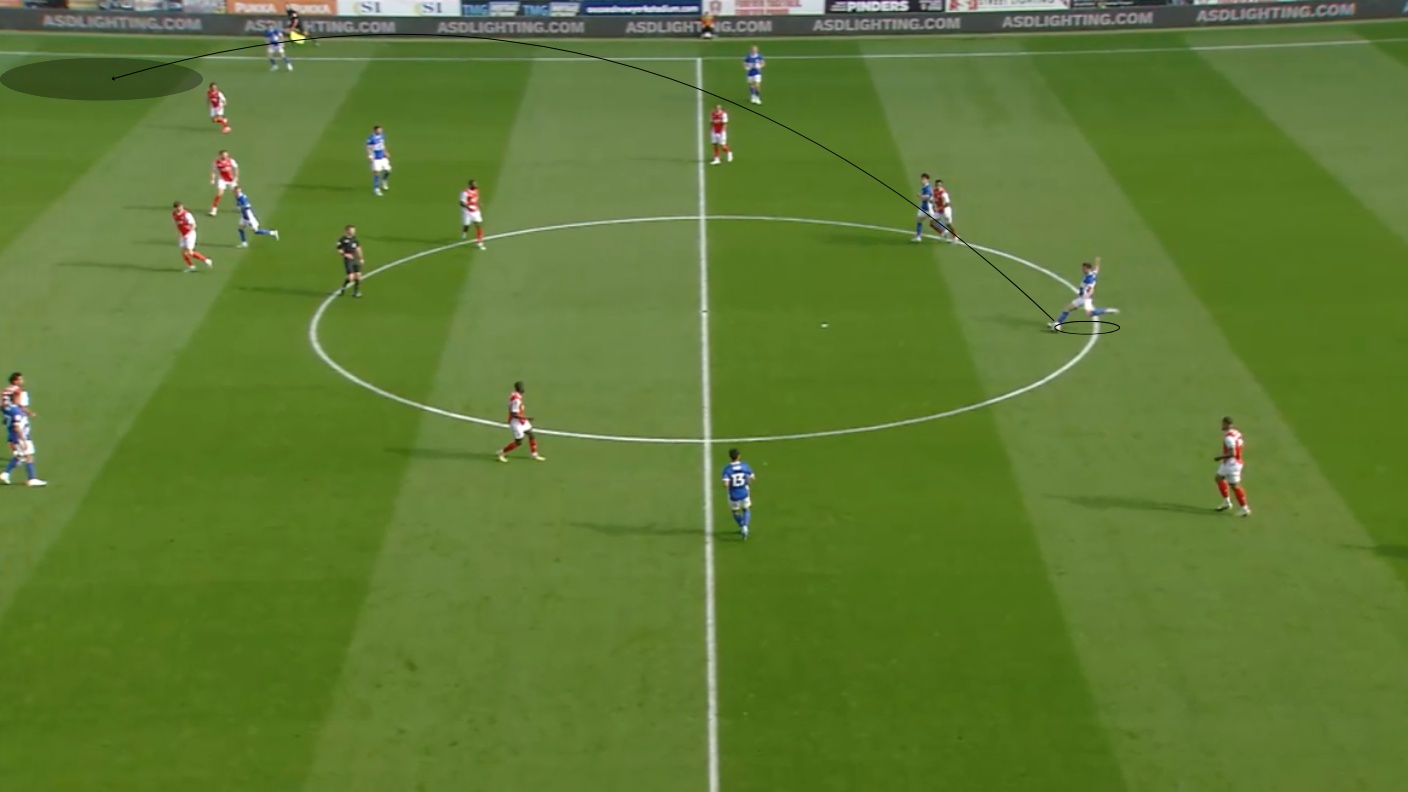
These are the crucial roles in the backline, but there are different ways to progress and penetrate the rival’s block.
Ways To Progress In Possession
The most common way for a team to defend a profile like Chris Davies’ is to designate man-to-man marking in the mid-block.
Tactically, it is complex to break.
Birmingham tends to try and shake the opposition’s defensive line via positioning and off-the-ball movement.
Both Jay Stansfield and Willumsson usually start at a different height from the striker.
However, they can easily pin like centre-forwards, or one of them can drop deeper to drag defenders and attack space in behind.
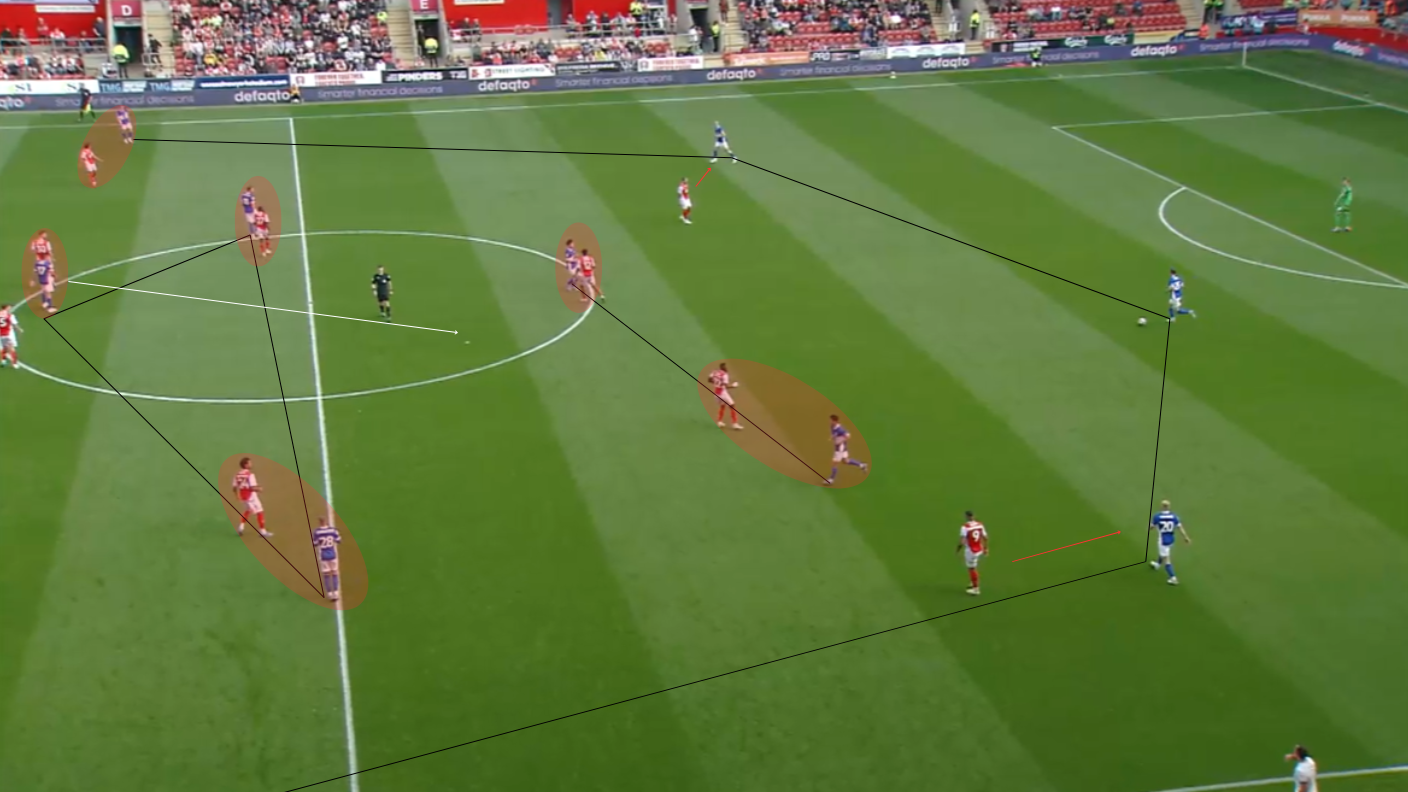
In Figure 7, Alfie May decided to exploit the free space between the lines even though he is, by definition, the striker.
The centre-backs are presented with a dilemma over whether to follow him or stand their ground.
With that simple movement and the coordination with Stansfield-Willumson watching the space behind, the centre-backs have a difficult choice.
If one of them is dragged by May, Stansfield and Willumsson will run in behind, and a potential long ball is a threat.
If they stay in the defensive line, May receives free and can progress by driving with the ball or combining in wide zones—sinking the rival and maintaining possession.
Where Birmingham’s Quality Makes The Difference: The Final Third
Birmingham’s squad talent is excellent.
This is mainly confirmed by their players in the final third, especially Jay Stansfield and Willum Þór Willumsson.
Let’s analyse some tactical patterns.
Their relationship boosts the quality of these players.
They make rotations, combine in tight or big spaces and read the game better than any attacking partnership in League One.
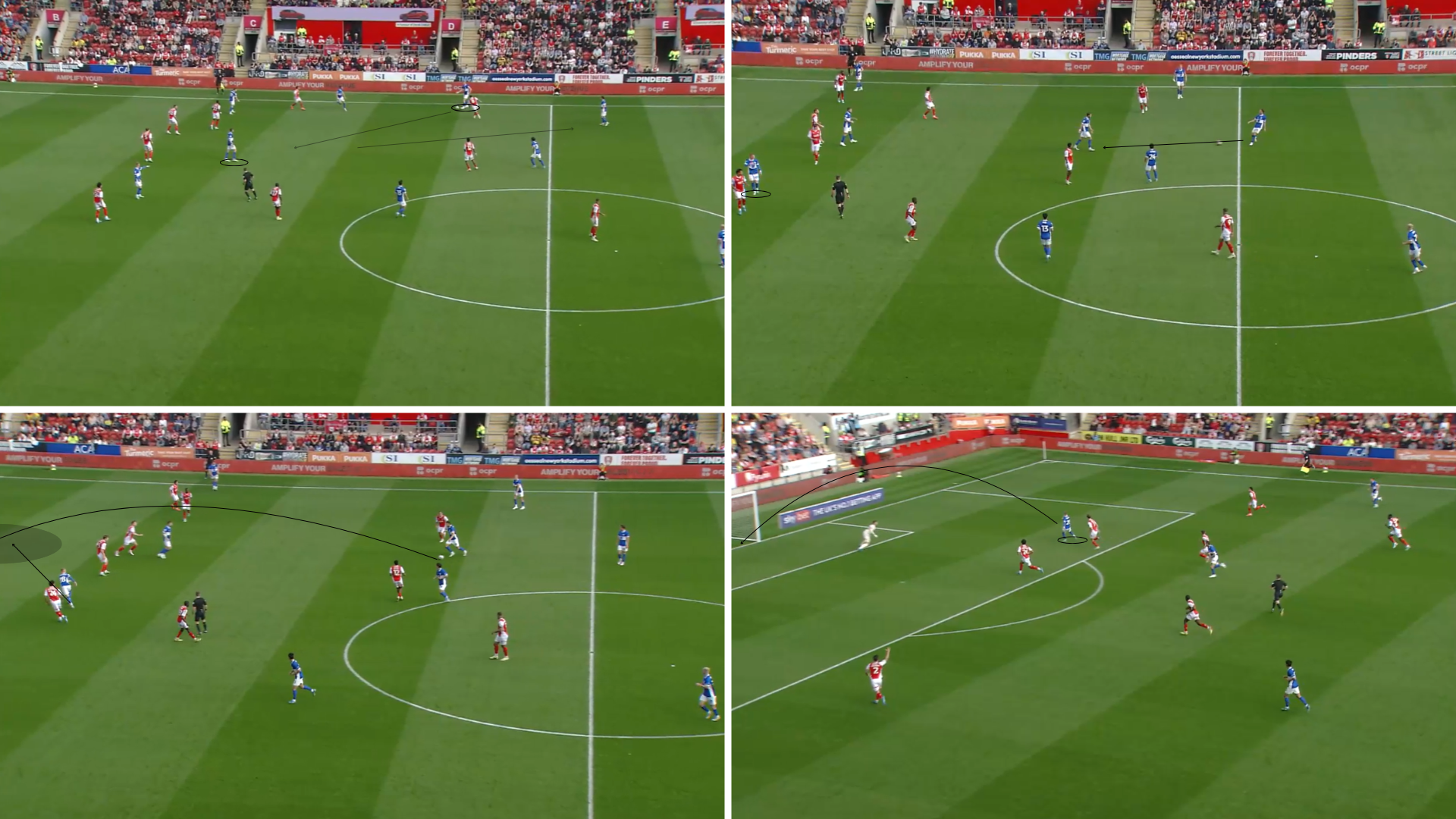
Figure 8 is an example of progressive passing patterns and finishing ability.
Willumson already has the highest number of goal contributions (11) in England’s third-tier this season — more than any Birmingham player this past year in the Championship.
His reading of free spaces by occupying them accurately and his technical abilities to combine are class.
Jay Stansfield Scouting Report – The Rising Star
The people of Birmingham fell in love with Jay Stansfield last season, and he deserves a particular focus in this analysis.
Figure 8 shows his main abilities in front of goal.
Paradoxically, without being an innate goalscorer, Stansfield has developed his variety of angles and aims and averages a goal every 122 minutes—the best average on the team.
Jay Stansfield Shots Map
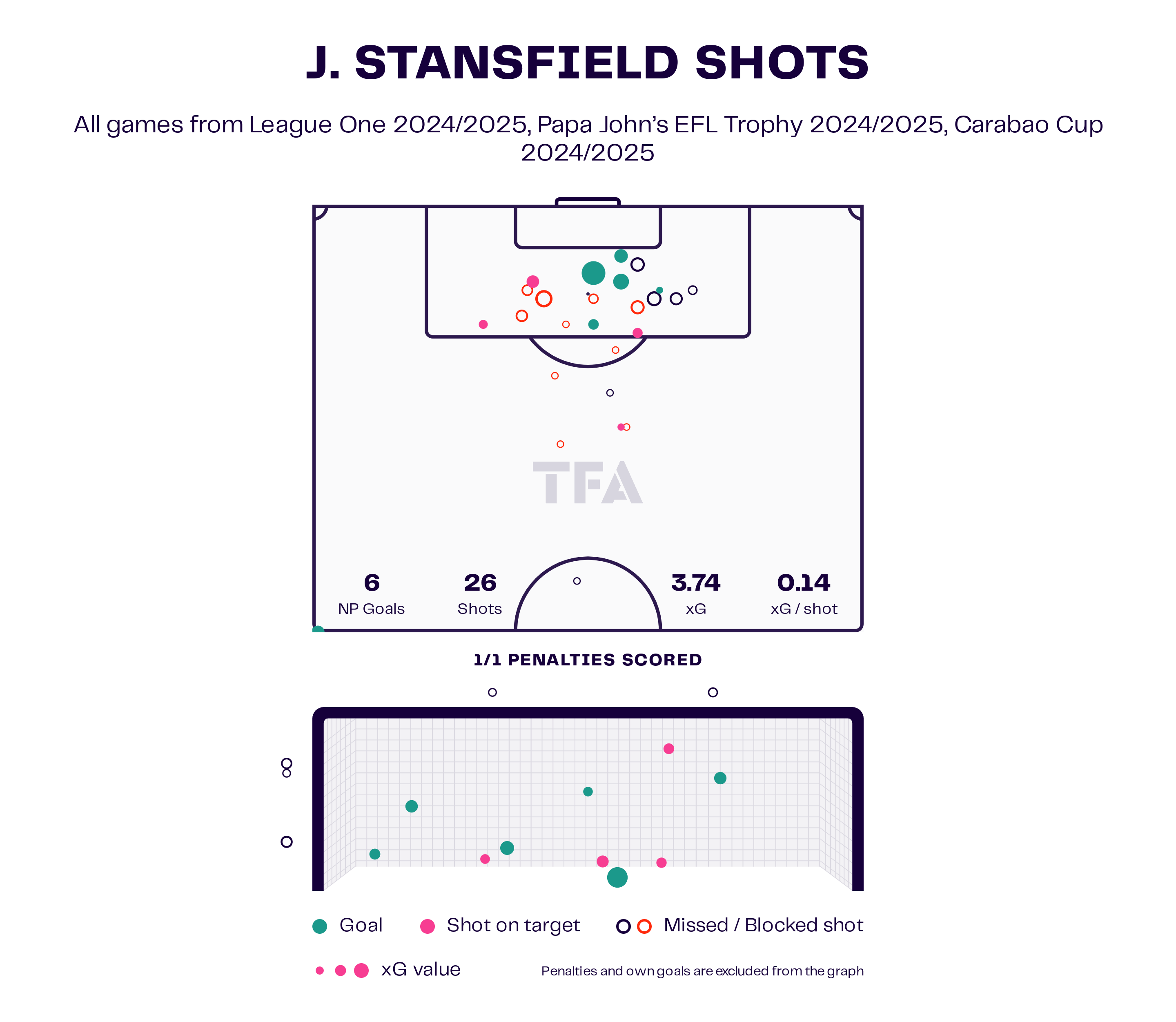
In front of the goalkeeper, he has a natural instinct to choose the best shooting option, as he did in Figure 8, with a certain confidence in performing a lob.
In addition, Stansfield’s reading, velocity and timing to not being offside are top-class, attacking spaces in behind and taking advantage of a defender from their blind side.
In that sense, the partnership with Ben Davies is fantastic for attacking mid-blocks.
Then, once he takes advantage, his technique of carrying the ball from a distance to the penalty area is excellent, and thanks to this resource, he gets many great goal opportunities.
Jay Stansfield Penetrating Carries Map
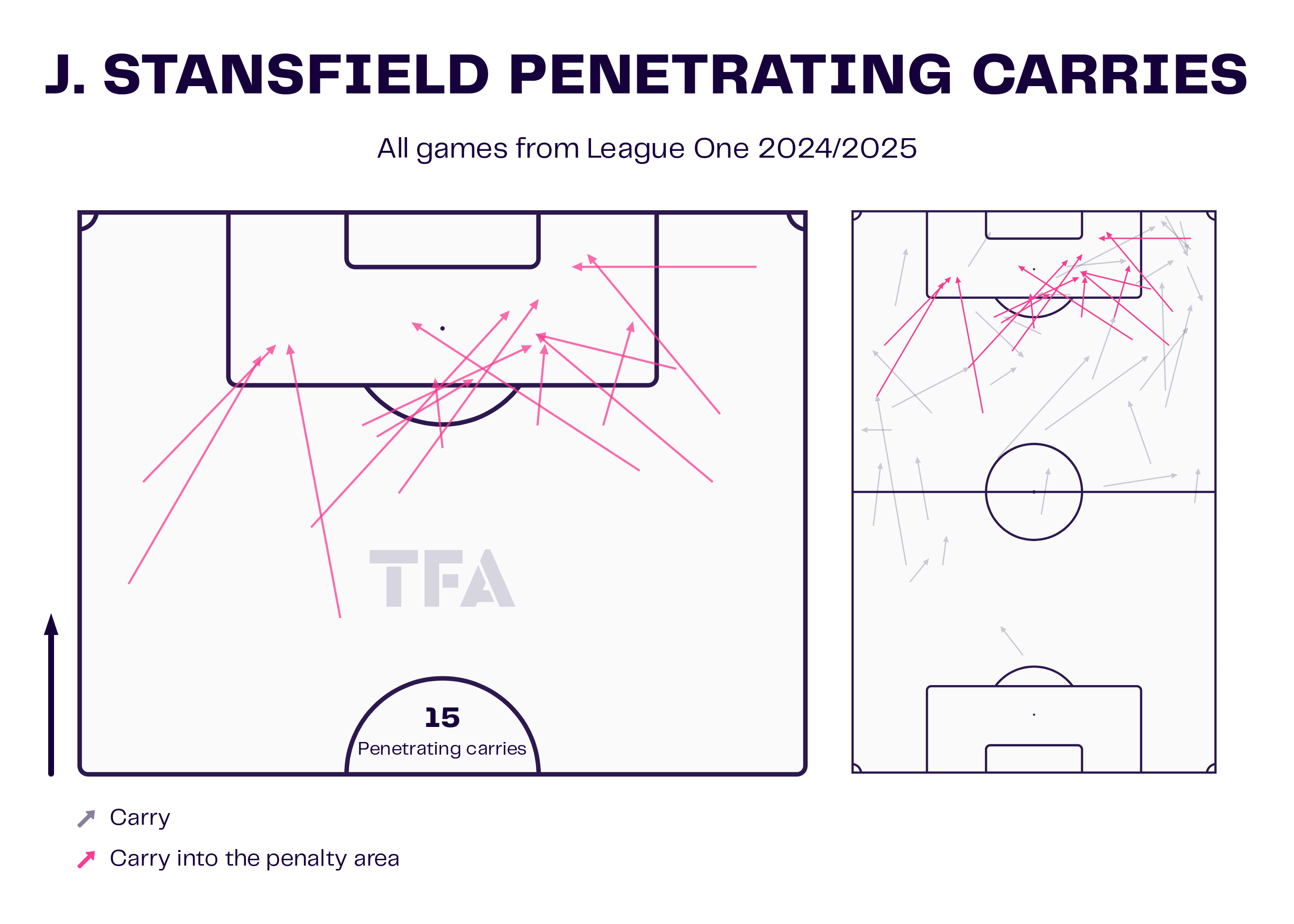
Birmingham City Attacking The Box
Just as Stansfield, Willumsson and May/Dykes/Harris can leave their zone and confuse the opposition’s defensive line away from the penalty area, they can do the same in the box.
The other top register that Stansfield has in his profile is his capacity to disappear from the defender’s radar into the box or drag opponents there to create space for his teammates as a decoy.
Willumsson is a big threat when disembarking to attack cutbacks or crosses, where Stansfield can feed him—another weapon to create danger.

Recovering The Ball Immediately
To dominate the game as Birmingham wants and the registers that they have, recovering the ball as soon as possible is a must.
After losing the ball, Birmingham usually orients their pressing with a man-to-man marking focused on the strong side.
They tend to let the far man get free, designate man-to-man marking in the centre and avoid switching the play by restarting with the goalkeeper.
In League One, most centre-backs are not technically privileged in terms of passing and turning to skip pressing lines; that is why Birmingham usually leaves the far man unmarked—they know the ball will not go accurately to them.
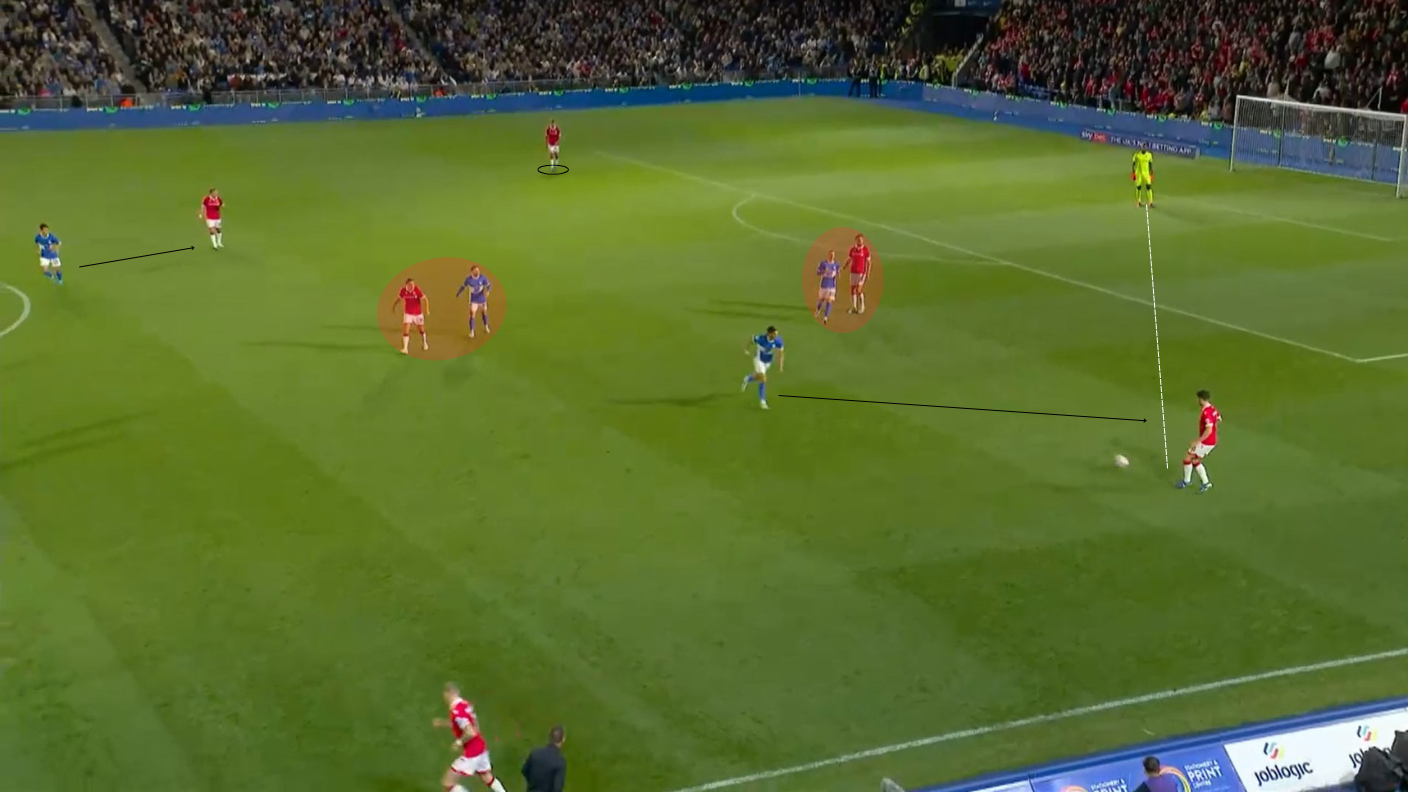
This configuration forces the rivals to play many long balls per match, and Birmingham’s centre-backs win enough of these situations by covering depth well.
Birmingham City Defensive Territory Map
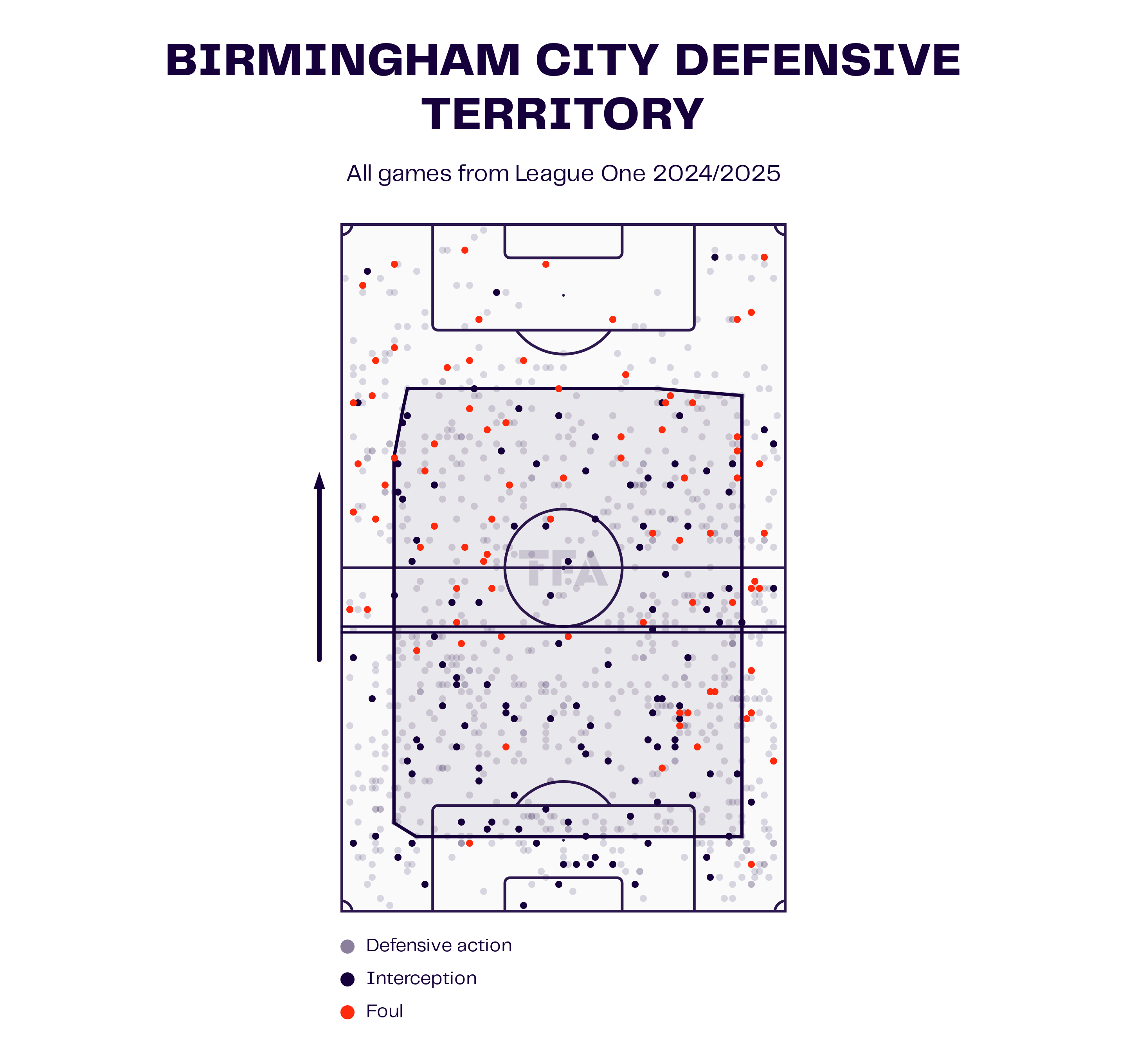
As Figure 13 shows, the height of Birmingham’s defensive line is optimistic about League One’s innovation.
The quickness that Birmingham applies to suffocate the rival while pressing is that of a counter-pressing style.They complete many recoveries in dangerous zones when opposition players make mistakes in the passing circuit or body shape to receive.
A player like Jay Stansfield is committed when pressing, while Willum Þór Willumsson is a physically strong profile to win duels by crashing and destabilising the rival.
Birmingham City High Regains Map
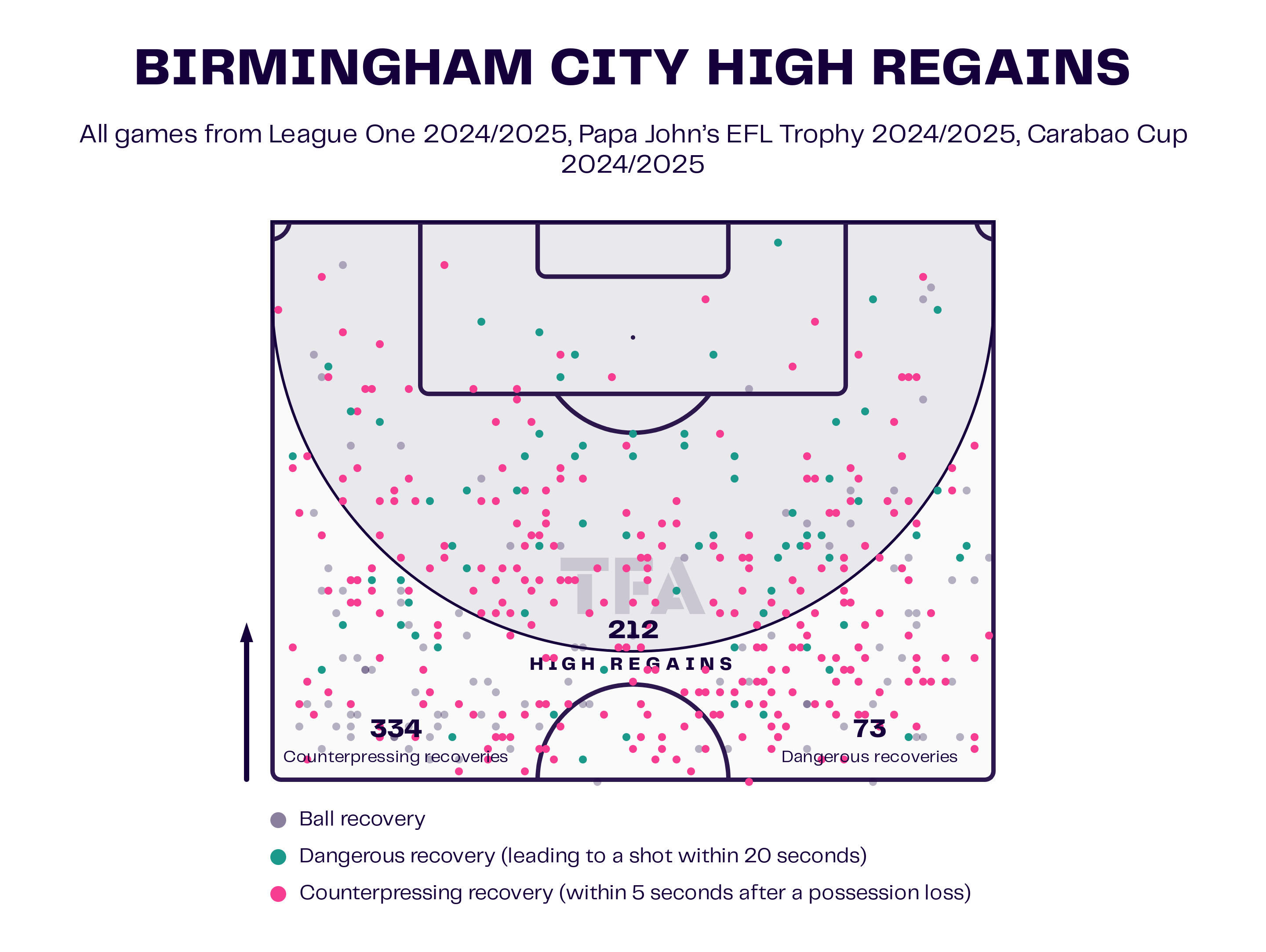
Conclusion
Chris Davies’ style of play makes him a real candidate for promotion this year.
He needs to establish his playing model at the EFL Championship to compete in the long term.
Jay Stansfield is the known and standout gem for now, but this team is capable of growing a lot.
Players like Marc Leonard and Taylor Gardner-Hickman (22 years old) can increase the level of the double pivot in passing and physical terms.
While Ayumu Yokoyama (21) and Luke Harris (19) have shown what they can do with their fantastic talent.
They are not key players yet, but they surely have the potential to be.
Mixed with players like Ben Davies or Christoph Klarer, who have played at the first-team level before, the team is balanced in promising talent and experience.
Even the quality of Stansfield and Willumsson in the final third is exciting, considering they are one step ahead of the others in the league.
So, Chris Davies’ tactics will keep developing, and the results can accompany the most dominant team in EFL League One.






Comments